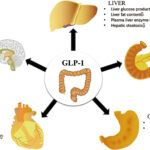Scrolling through my Facebook feed I am met with a huge variety of information. Some of it is useful and interesting, some of it is entertaining, and some of it is utter nonsense. Among all this, juxtaposed between a friend’s cute baby and a quiz about spirit animals, are posts that are deeply traumatic.
In the age of digital media, many news agencies share breaking news via Facebook and Twitter, sometimes before the details of the full story have emerged. And it’s not just ‘official news’ – social media is also rife with uncensored video and photo content that can sometimes be disturbingly graphic.
This means that if you spend any time on social media you may find yourself bombarded with traumatic and disturbing news. And, unsurprisingly it could be taking its toll on your mental health.
Dr Pam Ramsden from the Faculty of Social Sciences, University of Bradford is particularly interested in how viewing traumatic events on social media can impact us. In a recent study on the topic she found that for some of us, the affects could be similar to Post Traumatic Stress Disorder (PTSD).
In the study, participants were shown a series of violent news events including the 9/11 Twin Tower attacks, school shootings and suicide bombings. The participants were then tested for trauma, including a clinical assessment for PTSD.
Worryingly, as many as twenty two per cent of participants were significantly affected by the social media events and scored high on clinical measures of PTSD. It is worth noting, that none of these people were directly involved in any of the news events shown and had only watched them via social media.
I asked psychologist and digital media consultant Jocelyn Brewer why viewing news via social media can have such a profound impact on us. She says that social media is much closer to our personal lives than traditional news broadcasts.
“It’s not like turning on a news channel where you can expect to come across news stories. Your social media is random in that you can’t directly filter it for good/happy news only – you’re at the relative mercy of what your friends decide to share,” she explains.
This also means that some of the news events you see on social media are much more graphic than the news that you see via traditional news broadcasts.
A good example of this is an image that was widely circulated via social media following the massacre of 147 students at Garissa University, in Kenya last month. The photo showed piles of dead bodies piled up in a courtyard and quickly went viral. While the picture showed the true horror of the event, it would not have appeared on traditional news without warning.
In addition to this, for many of us, social media is something we tap into on a regular basis, and for some, it is the last thing they look at before going to sleep, and the first thing they look at when they wake up. Therefore any traumatic news that appears can be quite intrusive.
Brewer tells me that some of the stress we experience when we see traumatic news comes from the fact that it makes us feel helpless, particularly for people that are very empathic. She suggests that one way of dealing with this feeling is to find a positive way to help, perhaps by making a donation or looking for another way to contribute.
Of course, it is important to be aware of the news events that are taking place around the world. For me, being a responsible global citizen means taking an active interest in global news. But when that news is distressing, where do we draw the line between being aware and protecting ourselves?
In answer to this question, Brewer notes that it’s okay to switch off sometimes.
“Don’t use social media if it’s stressing you out. Don’t use it first thing in the morning. Create a buffer zone between yourself and the news,” she says.
However, Brewer also notes that sometimes we just need to accept that bad stuff happens in the world. So, perhaps rather than giving us all PTSD, social media is actually giving us a more impactful dose of reality. And that might actually be a good thing.
[“source-sbs.com.au”]







